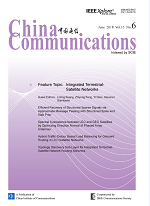NETWORKS & SECURITY
Xiaohang Zhang, Yu Du, Zhengren Li, Qi Wang
2018, 15(6): 139-157.
Due to the rapid development of mobile Internet services, such as Skype and WeChat, traditional telecom services have suffered a large decline in the business volumes in recent years. Thus, telecom operators pay much attention to analyzing the changes of the enterprise performance, in order to adjust market strategies in time. In this paper, we propose a new methodology to analyze the operation data of telecom operators dynamically, which can characterize the changing process of the operating states and predict the developing trends. In particular, the proposed methodology contains two steps: migration pattern analysis and trajectory pattern analysis. Firstly, migration analysis is based on the changing of operating states between two points-in-time, which is referred to as the migration paths. Applying the clustering analysis to the migration paths can obtain the migration patterns, which characterize the changing feature of telecom operators during a short period, e.g. one month. Secondly, we combine a sequence of consecutive migration paths to obtain the migration trajectory. Through analyzing different trajectories based on the hierarchical cluster method and the Markov chain model, we obtain the trajectory patterns, which describe the changing progress during a relatively long period, e.g. one year. Based on the trajectory patterns, we can predict the possible performance changes. Finally, we apply the proposed method to a Chinese telecom operator for an empirical research, and has obtained a lot of development rules which provides insights into current telecom.
